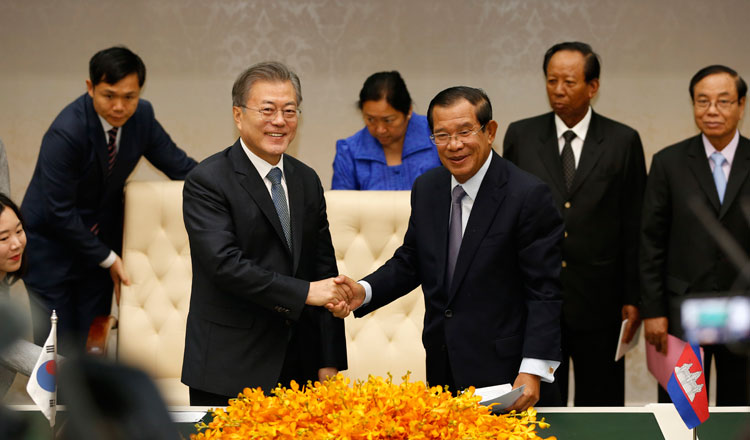More hydropower proposed as energy demand fluctuates
 Cambodia has a high dependency on hydropower representing about 48 percent of its domestic electricity production, according to the state utility Electricite du Cambodge. Supplied
Cambodia has a high dependency on hydropower representing about 48 percent of its domestic electricity production, according to the state utility Electricite du Cambodge. Supplied
A new 150 megawatt (mW) hydropower project has been proposed in Koh Kong province while Cambodia continues to grapple with fluctuating energy demands with a 20 percent decrease expected this year because of COVID-19 factory suspensions.
The project is proposed to be upstream of the Tatay River, in Koh Kong province’s Thmar Baing district and operated by the China Heavy Machinery Corp, which also developed the 246 mW Tatay River Hydropower plant only 20 kilometres away.
Victor Jona, director-general of Energy and spokesperson at the Ministry of Mines and Energy, told local media that the Chinese firm has finished the pre-feasibility study and the company is currently at the stage of environmental and social assessment at the provincial level.
Once the process is finished, the firm will be required to submit the report to the national level including Ministry of Mines and Energy and Ministry of Environment and other relevant ministries and institutions for assessment, he said.
If approved, the power investment project, as planned, is set to complete construction and link power to the grid in 2026, he added.
A megawatt is a unit for measuring power and represents 1 million watts which is equivalent to the energy produced by 10 automobile engines or 330 average homes for one hour.
Koh Kong is proving a popular destination for hydropower investment as another Chinese company, China Huadian Lower Stung Russei Chrum Hydroelectric Project (Cambodia), recently proposed building two more 100 mW and 70 mW dams in Koh Kong’s Mondul Sima district.
The proposals come as the national Electricity Authority of Cambodia (EAC) forecast demand for electricity will decline by 20 percent this year compared with an increase of around 30 percent in 2019, chief executive officer of the EAC Teng Sokomal was quoted as aaying.
The unexpected decline in energy consumption has been attributed to the mass closures of power-hungry factories across the country as COVID-19 devastates the country’s manufacturing sector.
“There is no significant increase in electricity demand this year as the pandemic had caused some garment factories and hospitality industries to suspend operations,” Sokomal added.
Cambodia’s expected energy decline is forecast to be three times greater than global energy declines, set to fall by 6 percent in 2020, the largest in 70 years, because of the Coronavirus pandemic according to the International Energy Agency.
On a positive note, the unexpected decrease in power demand has allowed the Kingdom to avoid annual dry season power shortages that have been crippling its cities.
Last year Cambodia had its worst power outages in many years as a surge in demand was fuelled by the construction boom along with low levels of water to operate the hydropower dams across the country.
Cambodia has a high dependency on hydropower representing about 48 percent of its domestic electricity production, according to the state utility Electricite du Cambodge.
In March the government announced that it would halt any further hydropower projects along the Mekong River for the next 10 years, “From 2020 to 2030 there will not be any developments of hydropower on the main river,” Victor Jona said at the time.
The decision came after a Japanese consultancy firm recommended Cambodia focus on diversified power sources. “According to the study we need to develop coal, LNG, imports from neighbouring countries and solar energy,” Jona said.
Credited: Khmer Times






